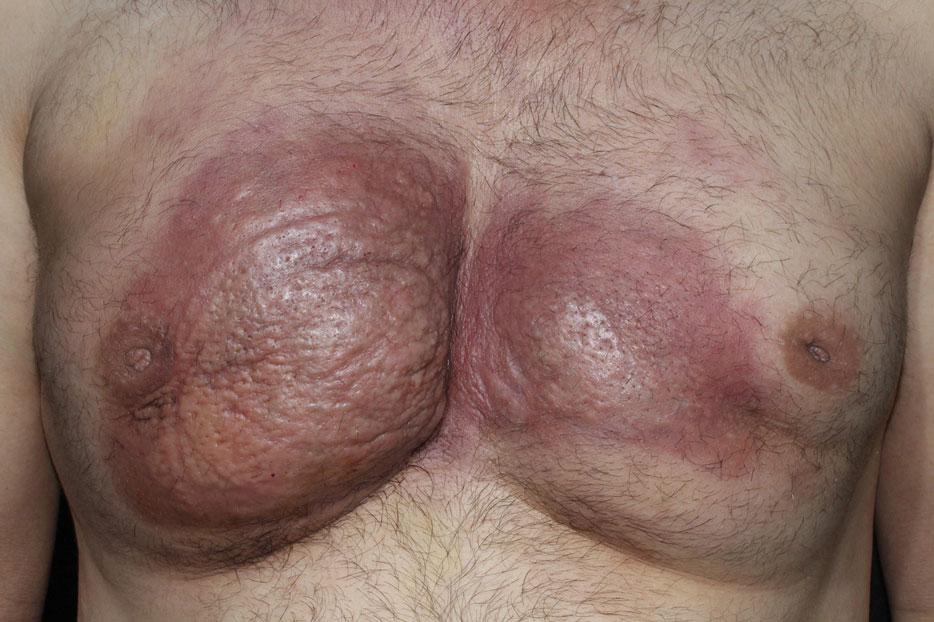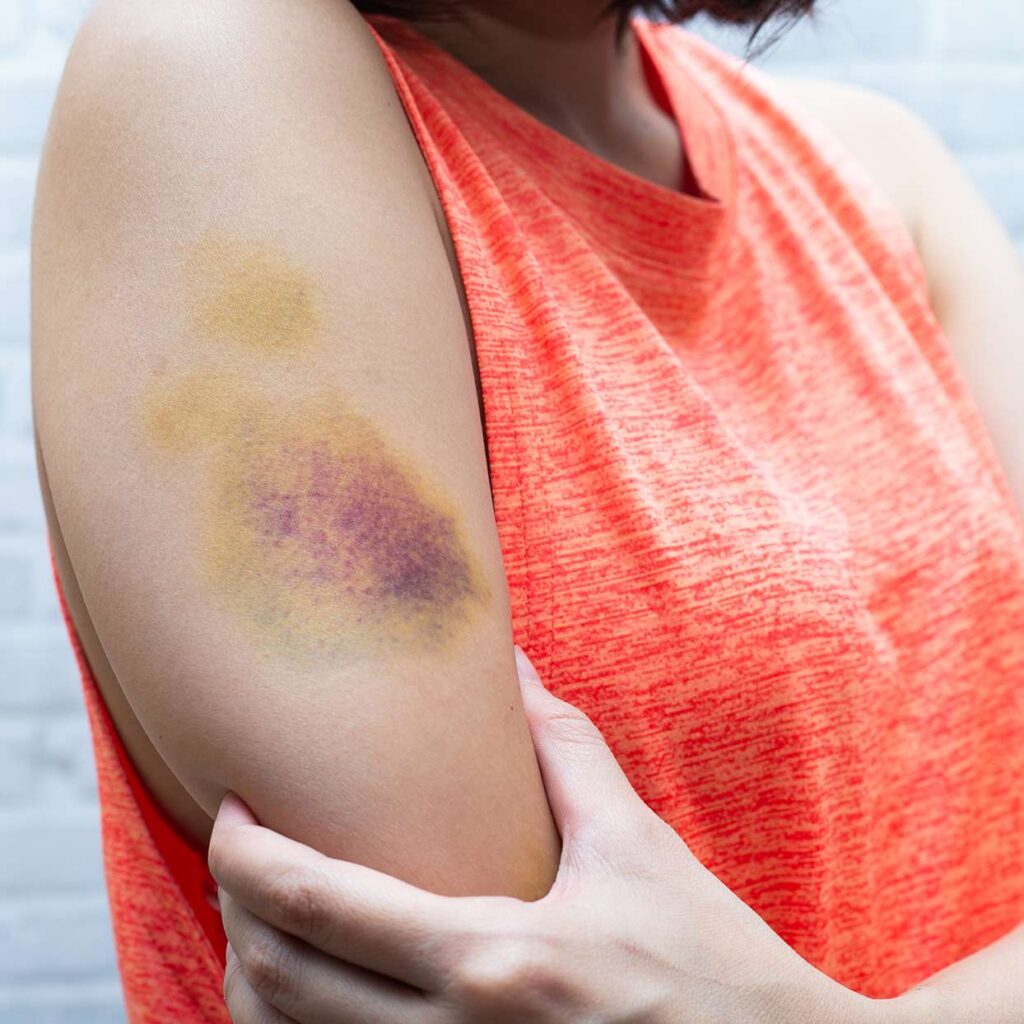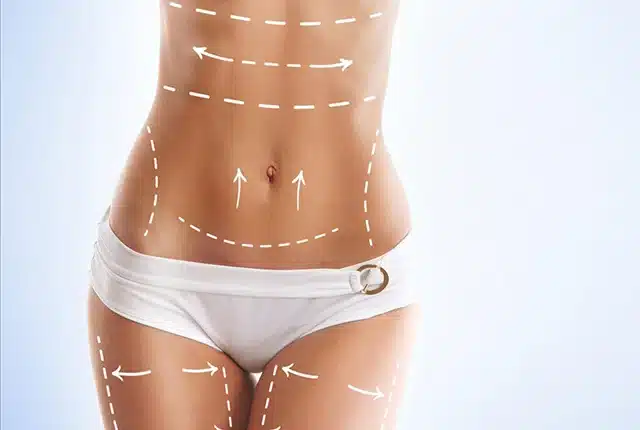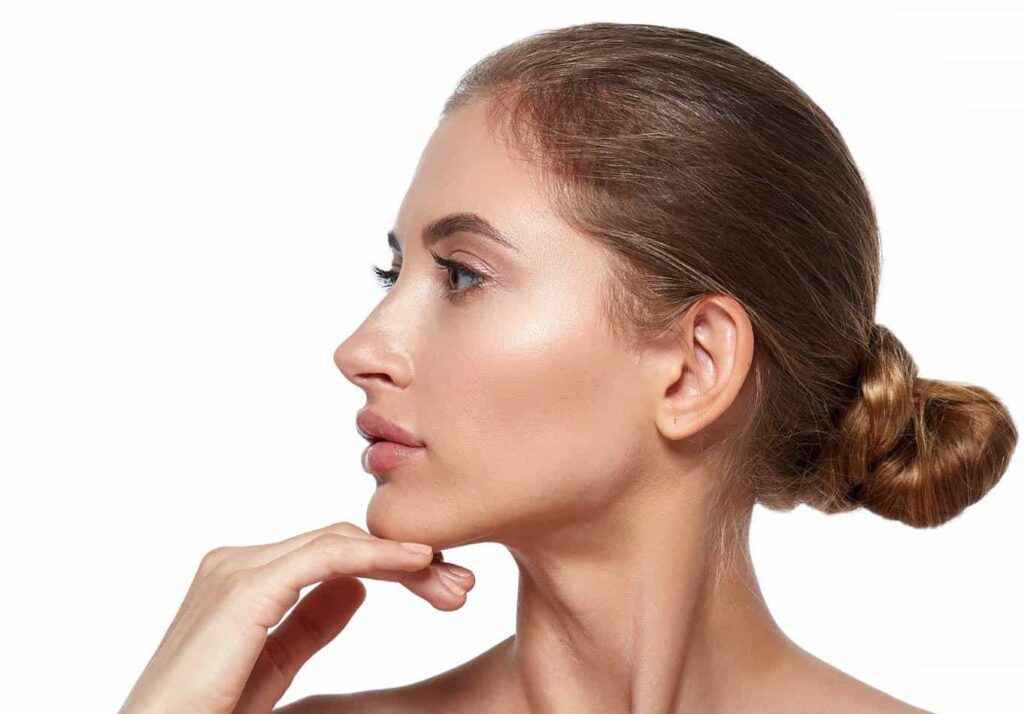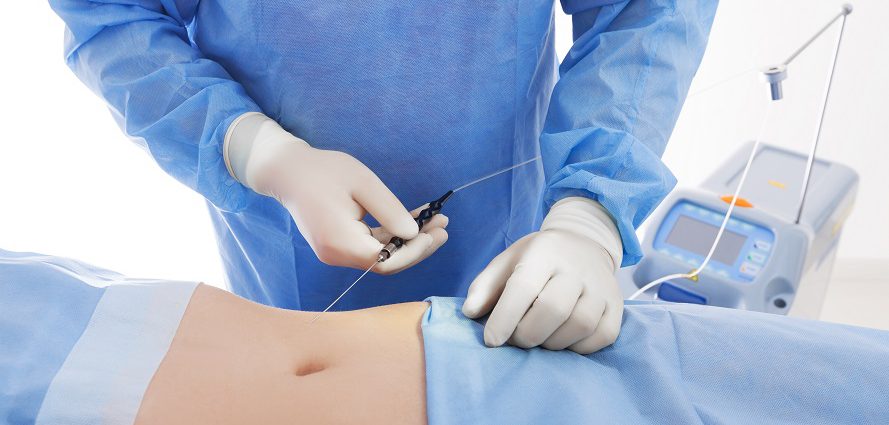BodyTite radiofrequency assisted technology has revolutionized the way we approach body contouring, including cellulite treatments, tummy tuck, and traditional liposuction techniques. This innovative method combines radiofrequency energy with liposuction, offering a non-invasive solution for fat removal and skin tightening, including bodytite treatments that highlight the benefits bodytite for the face. It emerged from advancements in cosmetic procedures, including traditional liposuction techniques and BodyTite treatments, that prioritize safety and effectiveness. Patients can achieve smoother and firmer skin with bodytite treatments without extensive downtime. BodyTite is gaining popularity due to its impressive results and minimal recovery time compared to traditional methods. This technique, including bodytite treatments, not only enhances body aesthetics but also boosts confidence. Understanding how BodyTite works and its benefits can help you make informed decisions about your body transformation journey.
Understanding RFAL in Body Contouring
RFAL Overview
Radiofrequency Assisted Lipolysis (RFAL) is a modern technique in body contouring. It combines radiofrequency energy with traditional liposuction methods. This combination improves fat removal and skin tightening. The RFAL system heats the tissue, which helps to break down fat cells. The heat also stimulates collagen production, leading to firmer skin.
Enhanced Results
The integration of radiofrequency energy enhances the results of standard liposuction. During the procedure, the RFAL device delivers controlled energy to the targeted area. This process liquefies fat, making it easier to remove. It also minimizes damage to surrounding tissues. Patients often experience less swelling and bruising compared to traditional methods.
Minimally Invasive Nature
RFAL is considered minimally invasive. Unlike traditional liposuction, it requires smaller incisions. This leads to quicker recovery times for patients. Most people return to their daily activities within days instead of weeks. The reduced recovery time is a significant advantage for many individuals. They appreciate being able to resume their routines faster.
Safety and Effectiveness
Studies show that RFAL is safe and effective for body contouring. The use of radiofrequency energy allows for precise treatment. Surgeons can target specific areas without affecting nearby structures. This precision reduces risks associated with surgery.
Ideal Candidates
Not everyone is a candidate for RFAL. Ideal candidates are generally healthy adults with localized fat deposits. They should have realistic expectations about the outcomes. Consulting with a qualified surgeon is essential before undergoing the procedure.
Principles of BodyTite Treatment
Bipolar Radiofrequency
BodyTite treatment utilizes bipolar radiofrequency energy to effectively target and tighten tissues. This energy heats the underlying skin layers while keeping the surface cool. The heating stimulates collagen production, which is crucial for skin elasticity.
The procedure promotes skin tightening by encouraging the body’s natural healing processes. Patients often notice improvements in skin texture and firmness after treatment. This method offers a non-invasive alternative to traditional surgical procedures.
Dual-Probe Mechanism
The BodyTite technique employs a dual-probe mechanism that delivers energy both internally and externally. One probe goes beneath the skin, while the other stays on the surface. This allows for precise control over temperature and energy delivery.
By using this dual approach, the BodyTite procedure enhances safety and effectiveness. It minimizes damage to surrounding tissues. As a result, patients experience less discomfort and a quicker recovery time compared to conventional liposuction methods.
Collagen Fiber Contraction
Collagen fiber contraction plays a vital role in achieving skin tightening during BodyTite treatments. The heat generated from the bipolar radiofrequency causes collagen fibers to contract. This process leads to immediate tightening effects.
Over time, as collagen production increases, patients see even more improvement in their skin’s appearance. Enhanced collagen levels contribute to long-lasting results. Many individuals appreciate how BodyTite helps them achieve a more youthful look without extensive downtime.
Benefits of BodyTite
BodyTite treatments offer several advantages. They provide effective contouring with minimal invasiveness. Patients enjoy reduced bruising and swelling compared to traditional methods.
Another benefit is the ability to treat multiple areas in one session. Common areas include the abdomen, thighs, and arms. This versatility makes BodyTite an appealing option for many seeking cosmetic body enhancement.
In summary, BodyTite combines advanced technology with effective techniques to deliver noticeable results. The use of bipolar radiofrequency energy, along with its dual-probe mechanism, ensures safe and efficient treatment. Collagen fiber contraction further enhances skin tightening outcomes.
Benefits of Radiofrequency Lipocoagulation
Reduced Downtime
BodyTite offers a significant advantage over traditional liposuction procedures. Patients experience less downtime after the treatment. Regular liposuction often requires longer recovery periods, with patients needing to rest for weeks. With BodyTite, many return to their daily activities within a few days. This is due to its minimally invasive nature. The procedure uses radiofrequency assisted lipo technology, which means smaller incisions and less trauma to the surrounding tissue.
Less downtime also means fewer missed workdays. Patients appreciate this benefit, especially those with busy schedules. They can achieve their desired fat removal effects while minimizing disruption to their lives.
Minimal Scarring
Scarring is a common concern with traditional liposuction. BodyTite addresses this issue effectively. The technique utilizes smaller incisions compared to conventional methods. This leads to minimal scarring, which is particularly appealing for many individuals.
By using advanced technology, BodyTite promotes better healing. It helps the skin retract and tighten during fat removal, reducing the visibility of scars. Patients can enjoy smoother results without worrying about noticeable marks on their bodies.
Effective Skin Tightening
Loose or sagging skin is a challenge after weight loss or aging. Traditional liposuction may not adequately address this issue. BodyTite excels in treating loose skin by combining fat removal with radiofrequency energy. This energy stimulates collagen production, leading to tighter skin post-procedure.
Patients notice improvements not just in fat reduction but also in overall skin texture and firmness. BodyTite works well on various body areas, including the neck, where sagging skin is common. This dual-action approach makes it a preferred liposuction technology for those seeking comprehensive results.
Safety Features
Safety is paramount in any medical procedure. BodyTite incorporates several safety features that enhance patient protection. One key feature is continuous temperature monitoring during the treatment. This system prevents burns by ensuring that the skin’s temperature remains at safe levels.
The technology allows practitioners to control the heat applied during the procedure closely. This minimizes risks while maximizing effectiveness. Patients can feel confident knowing that their safety is prioritized throughout the process.

Addressing Stubborn Fat and Skin Laxity
Fat Liquefaction
BodyTite uses radiofrequency energy to liquefy fat cells. This process makes the removal of fat easier during the procedure. Traditional liposuction techniques often require more effort to extract stubborn fat. With BodyTite, surgeons can achieve better results with less trauma to surrounding tissues.
Fat liquefaction also allows for a smoother contour after treatment. Patients experience less bruising and swelling compared to traditional methods. This technique improves recovery time significantly.
Dual Benefits
BodyTite offers a unique advantage by combining fat reduction and skin tightening in one session. While traditional liposuction focuses solely on fat removal, BodyTite enhances skin elasticity at the same time. This dual benefit is crucial for individuals experiencing moderate skin laxity or loose skin.
The radiofrequency energy stimulates collagen production. This leads to tighter skin over the treated area. Patients often notice improved skin texture and firmness after the procedure.
Areas of Impact
BodyTite is especially effective for areas affected by pregnancy, weight loss, or aging. These life events can lead to significant changes in body shape and skin quality. Many individuals struggle with stubborn fat deposits in areas like the abdomen, thighs, and arms.
After pregnancy, women may find their bodies do not return to their pre-pregnancy shape. Weight loss can leave behind loose skin that does not tighten naturally. Aging also contributes to skin laxity as collagen production decreases over time.
BodyTite addresses these concerns effectively. It targets specific problem areas while providing a lift to sagging skin. Patients report high satisfaction levels due to the comprehensive results.
Treatment Candidates
Not everyone is a candidate for BodyTite. Ideal candidates include those with moderate skin laxity and localized fat deposits. A thorough consultation with a qualified liposuction surgeon is necessary to determine suitability.
Surgeons evaluate overall health, skin quality, and realistic expectations during this assessment. Understanding these factors helps ensure successful outcomes for patients considering BodyTite.
Safety Features of RFAL
Temperature Monitoring
Continuous monitoring of tissue temperature is crucial during RFAL procedures. This technology tracks both internal and external temperatures. It ensures that the tissues remain safe throughout the treatment. By maintaining optimal temperatures, the risk of burns decreases significantly.
Patients benefit from this real-time feedback. It allows for immediate adjustments if temperatures rise too high. This proactive approach enhances patient safety and comfort.
Anesthesia Options
Local anesthesia or IV sedation is commonly used in RFAL procedures. These methods help minimize discomfort for patients. Local anesthesia numbs the treatment area, while IV sedation provides a more relaxed experience.
Using these options helps patients feel more at ease during their procedure. Comfort remains a priority, allowing patients to focus on their results rather than any potential pain.
Advanced Safety Protocols
Advanced safety protocols further reduce risks associated with RFAL. The technology includes features designed to prevent complications. For example, the system can adjust energy delivery based on real-time feedback from the tissue.
These improvements lead to fewer instances of burns or other complications. Patients can feel confident knowing that their safety is prioritized throughout the process.
Comprehensive Training
Surgeons undergo extensive training before performing RFAL procedures. They learn how to use the equipment effectively and safely. This training ensures they understand all safety features and protocols.
Having well-trained professionals reduces risks even further. Their expertise plays a significant role in ensuring successful outcomes for patients.
Evidence-Based Practices
Studies support the effectiveness and safety of RFAL technology. Research shows that patients experience fewer complications compared to traditional methods. The evidence highlights the importance of continuous monitoring and advanced protocols.
Patients can trust that RFAL offers a safer alternative for addressing stubborn fat and skin laxity. The combination of technology, training, and protocols creates a reliable treatment option.
Technological Advancements in RFAL
Innovation in Delivery
Radiofrequency-assisted lipolysis (RFAL) represents a significant innovation in cosmetic procedures. This technology allows for the delivery of radiofrequency energy both internally and externally. The BodyTite system utilizes a dual approach. It emits energy through a cannula placed under the skin while simultaneously applying heat from outside the body. This method enhances fat removal and skin tightening.
The combination of internal and external energy delivery improves treatment outcomes. It creates a more uniform heating effect. This results in less damage to surrounding tissues compared to traditional methods. Patients experience faster recovery times and reduced discomfort.
Precision Targeting
The precision of the BodyTite system is noteworthy. It targets specific areas for treatment with accuracy. The device uses advanced imaging technology to visualize fat deposits beneath the skin. This helps practitioners determine the optimal locations for treatment.
Practitioners can customize the procedure based on individual patient needs. They can adjust settings to match the desired results. This personalization leads to better satisfaction rates among patients. The ability to focus on problem areas makes BodyTite a popular choice for body contouring.
Real-Time Monitoring Systems
Real-time monitoring systems are integrated into the BodyTite device. These systems enhance procedural safety and efficacy during treatments. They track temperature changes in real-time, ensuring that tissue does not overheat. This feature significantly reduces risks associated with thermal injury.
Practitioners receive immediate feedback throughout the procedure. This allows them to make necessary adjustments on the spot. The integration of these monitoring systems sets BodyTite apart from other devices on the market.
Patients also benefit from this technology. They can feel confident knowing that their safety is prioritized during the procedure. Enhanced monitoring contributes to achieving optimal results while minimizing complications.
Patient Selection Criteria
Ideal Candidates
Ideal candidates for BodyTite include those with mild to moderate skin laxity. These patients often seek solutions for areas like the abdomen, thighs, or arms. The procedure works best on individuals who have maintained a stable weight. Patients should also have realistic expectations about the results.
Younger patients may benefit significantly from this treatment. However, age alone is not a strict limit. Older adults can also qualify if they meet other criteria. Skin quality and elasticity play a crucial role in determining candidacy.
Minimally Invasive Options
BodyTite is suitable for patients looking for minimally invasive options. It offers an alternative to traditional liposuction and surgical lifts. The procedure utilizes radiofrequency energy to tighten skin while removing fat. Patients appreciate that it involves less downtime compared to invasive treatments.
Candidates should be aware that BodyTite requires local anesthesia or sedation during the procedure. This aspect makes it more appealing for those hesitant about general anesthesia. Many patients prefer this option due to its reduced risks.
Contraindications
Certain conditions may make BodyTite unsuitable for some patients. Pregnant women should avoid this procedure until after childbirth. Patients with specific health concerns must undergo a thorough medical evaluation before treatment. Conditions like uncontrolled diabetes or heart issues could pose risks.
Healthcare providers must assess these factors during consultations. A complete medical history helps identify any potential concerns. Patients should discuss their full health background openly with their doctors.
Importance of Evaluation
A comprehensive evaluation is essential before proceeding with BodyTite. This assessment includes physical examinations and discussions about goals. Doctors will consider each patient’s unique situation.
Patients must communicate any medications they are taking or previous surgeries they’ve had. This information helps ensure safety during the procedure.
In summary, proper patient selection is vital for BodyTite’s success. Ideal candidates typically have mild to moderate skin laxity and seek minimally invasive options. However, contraindications exist, making thorough evaluations crucial.
Treatment Parameters for RFAL
Session Duration
BodyTite sessions typically last between one to two hours. The exact time depends on the areas being treated. Common treatment areas include the abdomen, thighs, arms, and love handles.
The procedure starts with local anesthesia to ensure patient comfort. After this, the RFAL device is used to deliver radiofrequency energy. This energy helps in heating the tissue beneath the skin. The heating process promotes collagen production and skin tightening.
Combination with Liposuction
Combining BodyTite with liposuction enhances body sculpting results. Liposuction removes excess fat from targeted areas. BodyTite then tightens the remaining skin. This combination leads to smoother and more contoured outcomes.
Surgeons often recommend this approach for patients seeking significant fat removal along with skin tightening. Studies show that patients experience better overall results when both techniques are used together.
Customization of Treatment
Treatment parameters are customized based on individual patient needs. Each person has unique goals and body types. Surgeons assess factors like skin quality, fat distribution, and desired outcomes during consultations.
Adjustments may include changing the amount of energy delivered or the duration of treatment. Personalizing these parameters helps achieve optimal results while minimizing risks.
Patient feedback also plays a crucial role in customizing treatments. Surgeons listen to concerns about pain, recovery time, and aesthetic goals. This ensures that each treatment plan aligns with the patient’s expectations.
Visualizing Before and After Results
Immediate Effects
Patients notice immediate visible effects after BodyTite treatment. Skin appears tighter and smoother right away. This is due to the radiofrequency energy used during the procedure. The heat from the probes stimulates collagen production. Collagen helps improve skin elasticity and firmness.
Timeline for Full Results
Full results typically become apparent within three months. Initially, swelling may mask some changes. As healing progresses, the body continues to adjust. Most individuals see significant improvements in their treated areas by this time. The final contour of the body forms as swelling decreases and skin tightens further.
Longevity of Results
BodyTite results can be long-lasting. Many patients enjoy their improved appearance for years. However, it is important to note that skin aging will continue. Factors like weight fluctuations can also affect results over time. Maintaining a stable weight can help preserve these gains.
Areas Treated
BodyTite works effectively on various areas of the body. Common treatment areas include the abdomen, arms, thighs, and neck. Each area responds well to the procedure’s unique approach. Individuals often choose multiple areas for treatment to enhance overall body form.
Downtime Considerations
Downtime after BodyTite is generally minimal. Most people return to daily activities within a few days. Some swelling and bruising may occur but usually resolve quickly. Patients should follow post-treatment care instructions for optimal recovery.
Features of BodyTite
The BodyTite system has several key features. It uses a combination of liposuction and radiofrequency energy. This dual approach enhances fat removal while tightening skin simultaneously. Probes are inserted through small incisions, minimizing scarring.
Individual Results
Results vary between individuals based on several factors. Skin type, age, and lifestyle all play roles in outcomes. Each person’s body responds differently to the treatment. Therefore, it is essential to have realistic expectations regarding individual results.
Loss of Fat
Fat loss is another benefit of BodyTite treatment. It effectively removes stubborn fat deposits resistant to diet and exercise. Patients often achieve a more sculpted appearance after the procedure.
Final Remarks
BodyTite using radiofrequency-assisted liposuction is a game-changer in body contouring. It combines fat removal with skin tightening, giving you impressive results with minimal downtime. You can target stubborn fat and improve skin laxity effectively and safely. This technology stands out, thanks to its advanced safety features and clear visual outcomes.
If you’re considering BodyTite, ensure you’re informed about the treatment parameters and patient selection criteria. Knowing what to expect can make all the difference in your experience. Ready to take the next step? Consult a qualified professional today to explore how BodyTite can help you achieve your body goals. Your transformation awaits!
Frequently Asked Questions
What is BodyTite?
BodyTite is a minimally invasive body contouring procedure that uses radiofrequency-assisted liposuction (RFAL) to target stubborn fat and tighten skin simultaneously.
How does RFAL work?
RFAL employs radiofrequency energy to melt fat while tightening the skin. This dual-action process enhances body contours with minimal downtime.
What are the benefits of BodyTite?
BodyTite offers several benefits, including effective fat removal, skin tightening, minimal scarring, and quicker recovery compared to traditional liposuction.
Who is a good candidate for BodyTite?
Ideal candidates for BodyTite are individuals with localized fat deposits and mild skin laxity. A consultation with a qualified provider can determine suitability.
Is BodyTite safe?
Yes, BodyTite is considered safe when performed by experienced professionals. It includes built-in safety features to monitor temperature and protect surrounding tissues.
How long do results last?
Results from BodyTite can be long-lasting, especially with a healthy lifestyle. However, weight fluctuations may affect outcomes over time.
When can I return to normal activities after treatment?
Most patients can resume light activities within a few days. Strenuous exercise should typically wait for at least two weeks post-treatment for optimal healing.


